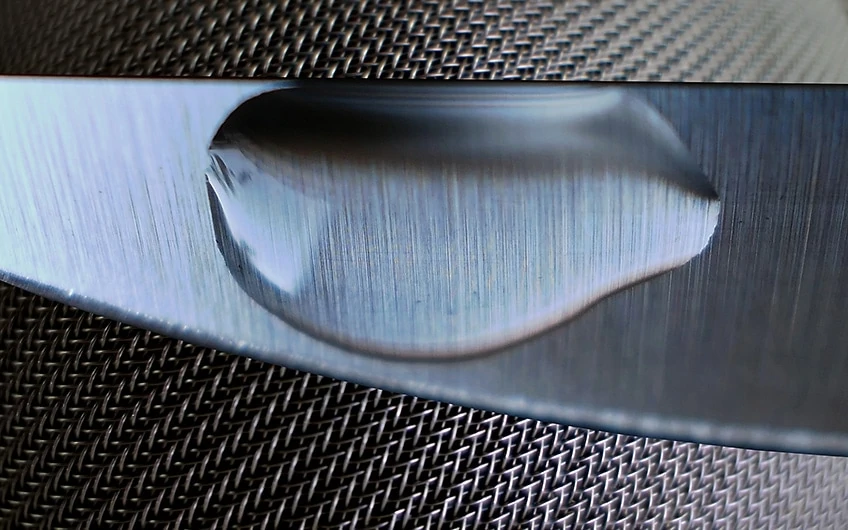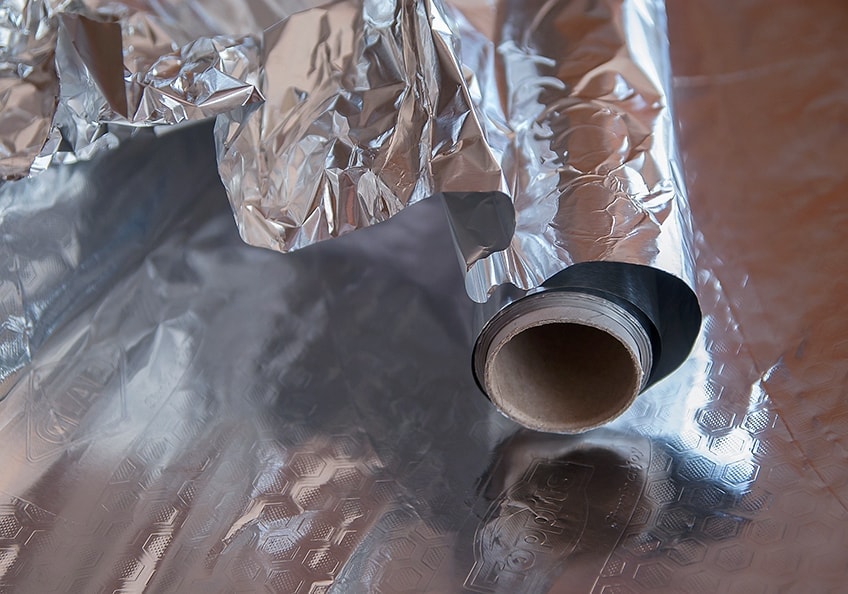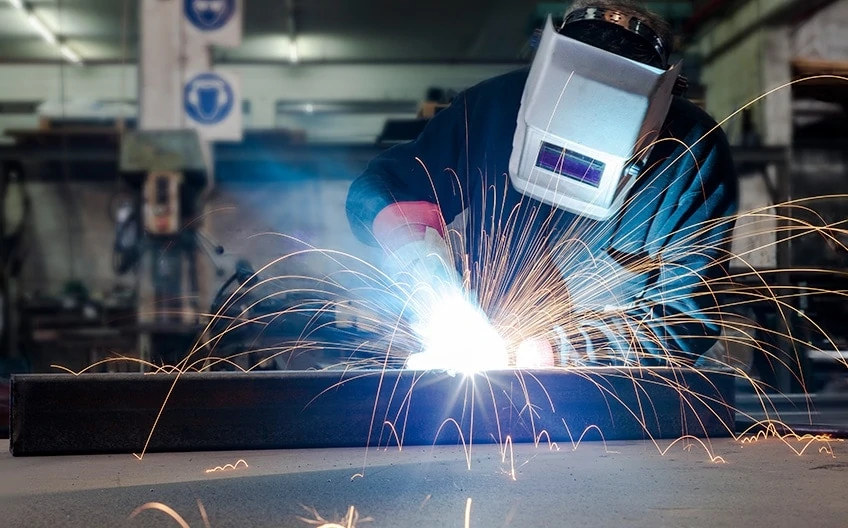Aluminum Glue – Helpful Guide for Aluminum Epoxy and Other Adhesives
This post may contain affiliate links. We may earn a small commission from purchases made through them, at no additional cost to you. You help to support resin-expert.com
Aluminum adhesive joints should be not only stable, but also as durable, inconspicuous, and at best heat-resistant as possible. Gluing paper to paper is child’s play, and it doesn’t matter which adhesive you use. The situation is entirely different if you want to glue aluminum to wood, for example – there are a few things to consider here. In our adhesive guide, we tell you what these are and which adhesive is the best when you want to bond aluminum to aluminum.
Table of Contents
Properties of Aluminum
Aluminum is a relatively new material that was discovered at the beginning of the 19th century and could be produced in pure form for the first time in 1827. At that time, the process was still so complicated that industrial production did not seem worthwhile. It was not until twenty years later that this material began its triumphal march around the world and developed into an industrially frequently used and highly valued metal. But no household should be without aluminum, for example as a thin foil for packaging or as a material for moldings.
The properties of aluminum are also ideally suited to today’s lightweight construction:
- It has an extremely high thermal conductivity, which is only surpassed by the conductivity of copper
- It is a relatively soft and easy to process metal and is therefore preferred by do-it-yourselfers
- If aluminum comes into contact with air, the top layer oxidizes and protects it from deep corrosion
- It is not called light metal for nothing: Due to its low weight, it saves energy, especially in the shipping and aircraft industries; however, it also proves its worth in other industrial sectors
- Due to its barrier properties, it can be used well as a packaging material to protect both food and pharmaceutical products from environmental influences
- Aluminum is interesting for the electrical industry because of its excellent electrical conductivity
These and other favorable properties make aluminum one of the most essential materials in the world today, both in the industrial and craft sectors.
To join aluminum together, the user has various options, which we will discuss below. However, there are a few things to consider, especially concerning the invisible oxidation layer that covers the aluminum. In addition to welding and riveting, there is also the possibility of bonding aluminum.
Aluminum is an excellent heat conductor. Its melting temperature is 660° Celsius, which is lower than that of copper, iron, and other metals. If you want aluminum bonding to be heat-resistant, you should pay attention not only to the melting temperature of the aluminum but also to the heat resistance of the adhesive used.
But which adhesive do you need for aluminum gluing?
The Best Aluminum Glue
In order to bond aluminum, you ideally need a construction adhesive. To glue aluminum, you have the choice of three different types of adhesive:
- Aluminum Epoxy: Epoxy adhesive is available in one or two-component versions. Bonding with this adhesive is extremely resilient and durable. However, an optimal preparation of the surfaces is necessary, which can be quite complex under certain circumstances. It should be noted that two-component epoxy resin adhesive cures under room temperature, whereas one-component epoxy adhesive requires heat and pressure.
- Strong, permanent, fast, and gap-filling epoxy glue
- Cures quickly, dries, clear, and is great for multi-surface application
- For tough repairs requiring a durable bond and solvent resistance
- Acrylate adhesive: This is an extremely robust two-component adhesive with high impact resistance. Note the short processing time: curing is very fast. Acrylic adhesives ensure an optimal connection both between two workpieces made of aluminum and between different materials such as aluminum and plastic, or aluminum and wood.
- No-run control gel formula that is great for use on vertical surfaces
- Versatile glue with an anti-clog cap to prevent it from drying out
- Specially formulated for increased impact resistance and strength
- Polyurethane glue: PU adhesives are also often two-component adhesives. They have a long pot life and are therefore ideal for working on large surfaces. PU adhesives also show excellent adhesive properties when joining different materials together.
- Incredibly strong and versatile glue can be used on many surfaces
- Best for tough repairs on dissimilar surfaces, both indoors and out
- 100% waterproof and will withstand exposure to outdoor elements
Two-component adhesives are usually supplied in a double-chamber cartridge, so that they do not have to be mixed at great expense. They are mixed automatically by pressing the dosing unit and can be applied easily in bead form or at specific points.
Instructions for Bonding Aluminum to Aluminum
The bonding of aluminum has become increasingly important in recent years. Today’s aluminum adhesives make it easy for industry and private users to achieve durable joints between aluminum parts. This has several advantages:
- Simple and fast application
- Weight saving
- No time-consuming preparation and follow-up work
- Achievement of high and sometimes even higher strengths than, for example, in welding
Nevertheless, there are some unique features to consider when bonding aluminum to aluminum. You can find out what these are in our aluminum bonding instructions below.
You usually need a two-component adhesive based on acrylate, polyurethane, or epoxy resin. Protect your workplace generously with several layers of newspaper and also wear your protective clothing. You can find out more about personal occupational safety in one of the following chapters.
Important: Before using the adhesive, study the manufacturer’s datasheet supplied with the product to obtain detailed information on application, pot life, flash-off time, and curing time. Make sure you have all the necessary things ready:
- The parts to be connected
- The adhesive
- Sandpaper with 120 grain or a sandblaster for large areas
- A somewhat harder brush or, for large surfaces, a hand brush
- Grease and silicone cleaner
- A lint-free cloth
When everything is ready, you can start with surface treatment.
Surface Preparation of Aluminum
It sounds strange, but first the surface has to be cleaned before it is treated with sandblaster or sandpaper – usually, the reverse order is used. However, there is a reason for this sequence of operations: If you start sandblasting or grinding without prior cleaning, there is a risk that dirt and grease particles will be introduced deep into the fabric by the mechanical processing. There, they then ensure weaker adhesion of the adhesive.
The following procedure is, therefore recommended:
- Clean grease and dirt particles thoroughly
- Sandblasting or grinding
- Remove grease and dirt again
- From now on, no more touching with bare hands!
- Apply adhesive
- Joining
After the surface has been cleaned and roughened, you must act quickly: Aluminium is a highly reactive material on whose surface an oxide layer quickly forms on contact with air. This can massively impair the adhesive properties of the adhesive, and even after curing, the adhesive seam can break. If the oxide layer has been removed by grinding or sandblasting, you have a maximum of ten minutes to apply the adhesive and join the two surfaces together.
Gluing Process
Now apply the two-component adhesive. Usually, this is done on both sides using the contact adhesive method; however, it is essential that you study the manufacturer’s instructions. After a specific flash-off time, press the two surfaces firmly together and fix them in place if possible. The flash-off time is an essential component in the bonding of aluminum. It is vital that you observe it accurately; otherwise, there is a risk of inadequate bonding, as possibly the solvent in the adhesive cannot evaporate.
How long the joint takes to achieve its ultimate strength depends on many factors such as the adhesive used, the materials being bonded, and the ambient temperature. It is best to follow the manufacturer’s instructions. In general, it is better to let the adhesive cure too long than too short.
Bonding Aluminum to Wood, Concrete and Other Materials
In addition to bonding aluminum to aluminum, it is also possible to join a wide range of different materials. You can glue aluminum to wood, but also join stone, concrete, and plastics with aluminum. For this purpose, mainly sticky construction adhesives based on epoxy resin, PU, or silicone are used. A distinction is made between bonding:
- Large areas, where mostly epoxy resin adhesive is used
- Small areas, for which PU or PUR adhesive is more suitable
When bonding different materials, ensure proper surface preparation so that the adhesive can optimally develop its adhesive properties.
- Wood must be carefully roughened so that the glue adheres well.
- Concrete and stone, if they have holes, must be filled and filled.
- Aluminum must be absolutely free of grease and dirt; this also applies to skin grease and the oxidation layer that is always present!
If you want to glue aluminum to wood, you must be aware that wood, unlike aluminum, is an organic substance that can change rapidly, for example, due to UV radiation or moisture. This is another reason why choosing the right adhesive is crucial.
Safety Instructions for Bonding Aluminum
In order to bond aluminum instead of welding, some safety aspects have to be considered. Wear gloves so that the adhesive does not come into contact with your skin. We also recommend wearing safety glasses to avoid contact between the adhesive and your eyes. If the adhesive comes into contact with your eyes or mucous membranes, wash them thoroughly with clear, warm water for several minutes and seek medical attention immediately. Make sure you take the datasheet of the adhesive with you so that the doctor can get an idea of the substances contained in the adhesive.
Ensure a well-ventilated workplace or wear a respiratory mask, as potentially harmful vapors may escape during bonding.
Also, think about the protection of your workplace. Lay out thick layers of newspaper or use special films to protect surfaces from the adhesive.
Options for Joining Aluminum
To bond this material together, you can, of course, glue it with aluminum glue, but there are other possibilities. However, these are often more complex – in general, it is many times easier to bond aluminum than to weld it.
Nevertheless, in our Aluminum Guide, we would like to discuss the most common joining techniques for aluminum:
- When riveting or also screwing, both joining partners are joined together with the help of rivet or screw connections. First of all, a hole is drilled, and then both parts are joined together with rivets or screws. This must not cause any weak points in the material; this is particularly important in areas susceptible to corrosion. Therefore, preventive measures against corrosion must always be taken.
This type of joint has the advantage that the aluminum retains its original strength, as the material is not heated, as is the case with welding. This technique is often used in aircraft construction. For the do-it-yourselfer, riveting with a hand-riveting tool is of interest. More frequent and simpler, however, is the gluing of aluminum.
- Welding can be done with three different methods:
- Metal inert gas welding, also known as MIG welding, uses an electric arc to join the two surfaces together under a shielding gas.
- Tungsten inert gas welding, also known as TIG welding, uses an arc fed by alternating current.
- The most modern variant is cold metal transfer welding, also called CMT welding. Here, the formation of spatter is avoided by joining the surfaces with only one single, perfectly timed melt drop at a time.
Also, by soldering, two joining partners made of aluminum can be permanently joined together.
Remember that heating always leads to high stress and thus to a reduction of the material strength. The surfaces joined in this way can also suffer optically; more or less bulging weld seams are produced.
- We already go into detail about bonding in our guide; therefore, we no longer describe the bonding process per se, but limit ourselves to mentioning that aluminum as a metal is of course very easy to bond. If the bonding work has been carried out properly, the bonded seam often proves to be more robust than a welded seam.
With this type of connection, the type of load must be taken into account. Bonded joints should never be loaded by pulling or peeling movements, as these can damage the bonded joint. Ideally, the joint is only loaded on thrust.
However, gluing aluminum has other advantages over welding. For example, it can also be used when riveting, or welding of aluminum is out of the question, for example, when joining aluminum and magnesium or for super-light plastics. Furthermore, an adhesive joint leads to a reduction in weight: Studies have shown that up to ten percent weight can be saved compared to conventional joining processes, which is a great advantage, especially in aircraft and automotive engineering.
Tips and Tricks
Typically, when bonding aluminum to stone, any unevenness must first be leveled out using fillers and filler. If, however, you use a paste-like construction adhesive for aluminum and stone or concrete, you can apply it in dense beads and level out any unevenness. In this way, you save yourself the trouble of filling up.
Bonding aluminum is not more difficult than bonding other materials. What matters most is proper surface preparation and the choice of the right adhesive. Whether or not aluminum bonding is heat resistant, you must refer to the datasheet of the adhesive. As far as the working process is concerned, just follow our instructions for aluminum bonding. We hope we could help you!








